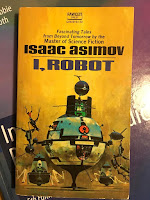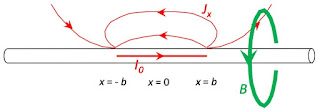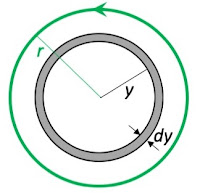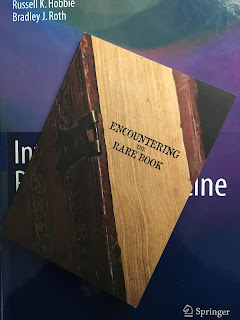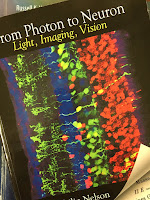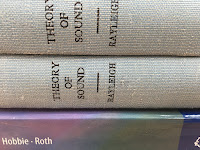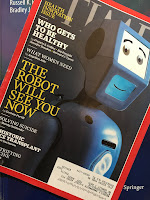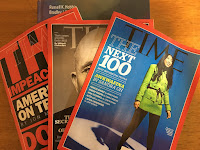 |
| Leonardo da Vinci, by Walter Isaacson. |
I’m a big fan of Isaacson, and I enjoyed his biographies of Einstein and Jobs (his book about Franklin is on my to-read list). In his introduction, Isaacson describes why he chose to write about da Vinci.
I embarked on this book because Leonardo da Vinci is the ultimate example of the main theme of my previous biographies: how the ability to make connections across disciplines—arts and sciences, humanities and technology—is a key to innovation, imagination, and genius. Benjamin Franklin, a previous subject of mine, was a Leonardo of his era: with no formal education, he taught himself to become an imaginative polymath who was Enlightenment America’s best scientist, inventor, diplomat, writer, and business strategist… Albert Einstein, when he was stymied in his pursuit of his theory of relativity, would pull out his violin and play Mozart… Ada Lovelace, whom I profiled in a book on innovators, combined the poetic sensibility of her father, Lord Byron, with her mother’s love of the beauty of math to envision a general-purpose computer. And Steve Jobs climaxed his product launches with an image of street signs showing the intersection of the liberal arts and technology. Leonardo was his hero.
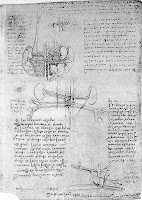 |
| Drawings of blood vessels, by Leonardo da Vinci. Credit: Wellcome Collection, CC BY. |
In his quest to figure out how the centenarian died, Leonardo made a significant scientific discovery: he documented the process that leads to arteriosclerosis, in which the walls of arteries are thickened and stiffened by the accumulation of plaque-like substances. “I made an autopsy in order to ascertain the cause of so peaceful a death, and found that it proceeded from weakness through the failure of blood and of the artery that feeds the heart and the other lower members, which I found to be very dry, shrunken, and withered,” he wrote. Next to a drawing of the veins in the right arm, he compared the centenarian’s blood vessels to those of a two-year-old boy who also died at the hospital. He found those of the boy to be supple and unconstricted, “contrary to what I found in the old man.” Using his skill of thinking and describing through analogies, he concluded, “The network of vessels behaves in man as in oranges, in which the peel becomes tougher and the pulp diminishes the older they become.”
 |
| I’m standing in front of The American Horse, inspired by da Vinci’s unfinished Horse sculpture, at Meijer Gardens in Grand Rapids, Michigan. |
Marcantonio died in 1511 of the plague that was devastating Italy that year. It is enticing to imagine what he and Leonardo could have accomplished. One of the things that could have most benefited Leonardo in his career was a partner who would help him follow through and publish his brilliant work. Together he and Marcantonio could have produced a groundbreaking illustrated treatise on anatomy that would have transformed a field still dominated by scholars who mainly regurgitated the notions of the second-century Greek physician Galen. Instead, Leonardo’s anatomy studies became another example of how he was disadvantaged by having few rigorous and disciplined collaborators along the lines of Luca Pacioli, whose text on geometric proportions Leonardo had illustrated. With Marcantonio dead, Leonardo retreated to the country villa of Francesco Melzi’s family to ride out the plague.I think Isaacson lets da Vinci off the hook too easily. Leonardo needed some of Michael Faraday’s discipline to “Work, Finish, Publish.”
 |
| A drawing of the heart, by Leonardo da Vinci. |
Leonardo’s studies of the human heart, conducted as part of his overall anatomical and dissection work, were the most sustained and successful of his scientific endeavors. Informed by his love of hydraulic engineering and his fascination with the flow of liquids, he made discoveries that were not fully appreciated for centuries…
Leonardo was among the first to fully appreciate that the heart, not the liver, was the center of the blood system. “All the veins and arteries arise from the heart,” he wrote on the page that includes the drawings comparing the branches and roots of a seed with the veins and arteries emanating from the heart. He proved this by showing, in both words and a detailed drawing, “that the largest veins and arteries are found where they join with the heart, and the further they are removed from the heart, the finer they become, dividing into very small branches.” He became the first to analyze how the size of the branches diminish with each split, and he traced them down to tiny capillaries that were almost invisible. To those who would respond that the veins are rooted in the liver the way a plant is rooted in the soil, he pointed out that a plant’s roots and branches emanate from a central seed, which is analogous to the heart.
Leonardo was also able to show, contrary to Galen, that the heart is simply a muscle rather than some form of special vital tissue. Like all the muscles, the heart has its own blood supply and nerves. “It is nourished by an artery and veins, as are other muscles,” he found.
 |
| Self portrait, by Leonardo da Vinci. |
Leonardo’s greatest achievement in his heart studies, and indeed in all of his anatomical work, was his discovery of the way the aortic valve works, a triumph that was confirmed only in modern times. It was birthed by his understanding, indeed love, of spiral flows. For his entire career, Leonardo was fascinated by the swirls of water eddies, wind currents, and hair curls cascading down a neck. He applied this knowledge to determining how the spiral flow of blood through a part of the aorta known as the sinus of Valsalva creates eddies and swirls that serve to close the valve of a beating heart…
Leonardo’s breakthroughs on heart valves were followed, however, by a failure: not discovering that the blood in the body circulates. His understanding of one-way valves should have made him realize the flaw in the Galenic theory, universally accepted during his time, that the blood is pulsed back and forth by the heart, moving to-and-fro. But Leonardo, somewhat unusually, was blinded by book learning. The “unlettered” man who disdained those who relied on received wisdom and vowed to make experiment his mistress failed to do so in this case. His genius and creativity had always come from proceeding without preconceptions. His study of blood flow, however, was one of the rare cases where he had acquired enough textbooks and expert tutors that he failed to think differently. A full explanation of blood circulation in the human body would have to wait for William Harvey a century later.
 |
| Vitruvian Man, by Leonardo da Vinci. |
The fifteenth century of Leonardo and Columbus and Gutenberg was a time of inventions, exploration, and the spread of knowledge by new technologies. In short, it was a time like our own. That is why we have much to learn from Leonardo. His ability to combine art, science, technology, the humanities, and the imagination remains an enduring recipe for creativity. So, too, was his ease at being a bit of a misfit: illegitimate, gay, vegetarian, left-handed, easily distracted, and at times heretical. Florence flourished in the fifteenth century because it was comfortable with such people. Above all, Leonardo’s relentless curiosity and experimentation should remind us of the importance of instilling, in both ourselves and our children, not just received knowledge but a willingness to question it—to be imaginative and, like talented misfits and rebels in any era, to think different.
 |
| The Last Supper, by Leonardo da Vinci. |
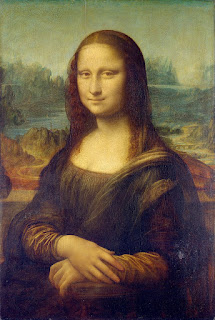 | ||||
| Mona Lisa, by Leonardo da Vinci. |
Listen to Walter Isaacson talk about Leonardo da Vinci on Sunday Morning.
https://www.youtube.com/embed/KJboCFa4iVQ?feature=player_embedded%22%20width=%22320
https://www.youtube.com/embed/KJboCFa4iVQ?feature=player_embedded%22%20width=%22320

